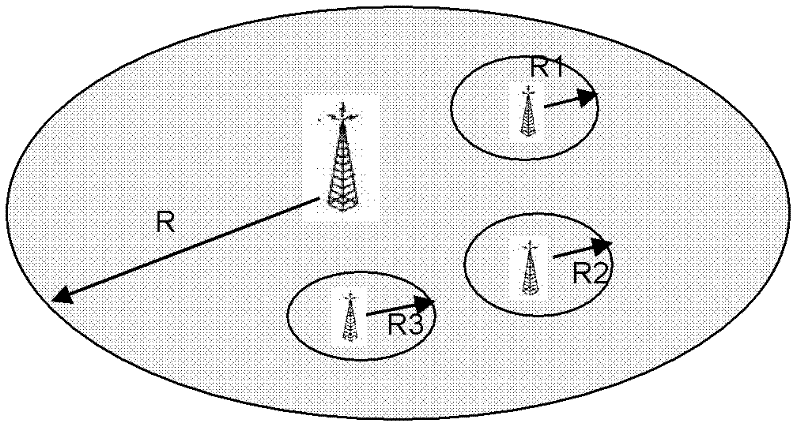Method for managing heterogeneous network resources based on reinforcement learning
A heterogeneous network and resource management technology, applied in the field of wireless resource management, can solve problems such as the inability to meet user business needs, and achieve the effect of improving resource utilization.
- Summary
- Abstract
- Description
- Claims
- Application Information
AI Technical Summary
Problems solved by technology
Method used
Image
Examples
Embodiment Construction
[0013] The present invention takes figure 1 The network environment shown is the background. This heterogeneous network is covered by a network N with the largest coverage area and the least available bandwidth resources. The network coverage area is a circle with a radius of R and the number of available bandwidth resources is B. At the same time, in order to meet the service requests of some hotspot areas, some networks with small coverage but rich bandwidth resources are repeatedly covered within the network range. i , the coverage area of each network is a circle with radius Ri. The number of available bandwidth resources for each network is B i , where B i >B(i≥1). The bandwidth resources allocated by the network to each user are based on the basic bandwidth units (BWU), according to 2 b BWU to allocate (b=0,1,2,...).
[0014] According to the 3GPP (3rd Generation Partnership Project) definition of 3G system service types, we selected three different services, voic...
PUM
 Login to View More
Login to View More Abstract
Description
Claims
Application Information
 Login to View More
Login to View More - R&D
- Intellectual Property
- Life Sciences
- Materials
- Tech Scout
- Unparalleled Data Quality
- Higher Quality Content
- 60% Fewer Hallucinations
Browse by: Latest US Patents, China's latest patents, Technical Efficacy Thesaurus, Application Domain, Technology Topic, Popular Technical Reports.
© 2025 PatSnap. All rights reserved.Legal|Privacy policy|Modern Slavery Act Transparency Statement|Sitemap|About US| Contact US: help@patsnap.com



